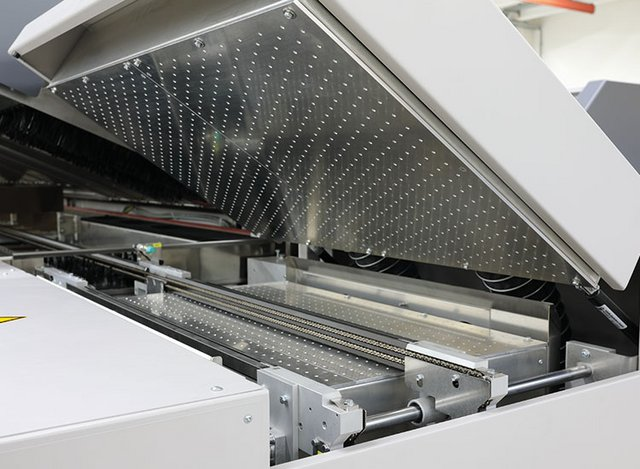Analysis of Advantages of Hot Air Reflow Welding Process
Release time:2024-01-08Publisher:Jeenoce
Forced hot air convection reflow soldering, also known as hot air reflow soldering, is the best choice for SMT reflow soldering and lead-free reflow soldering processes. It has some characteristics closely related to physical properties such as infrared and other methods, and due to the accelerated promotion and application of lead-free solder, the forced hot air convection soldering process has attracted more attention. Infrared radiation energy propagates directly, and when a small, thin device is adjacent to a larger size, a higher device will have shadows, producing uneven radiation. Forced hot air convection welding furnaces have many obvious advantages.

The increase in the forced hot air speed of hot air reflow soldering accelerates the speed of heat transfer to chip mounted devices on PCBs. Excessive wind speed can cause device displacement or detachment from the original accurate mounting position. So the speed of the hot air must be such that it does not cause displacement of the components directly under the hot air nozzle. Received high wind speed around the PCB, as the hot air flow in this area is a mixture of direct hot air flow and hot air flow transmitted from adjacent locations. If the hot air flow rate increases on a fixed PCB cross-section, its hot air velocity will inevitably increase.
Due to the difference in hot air flow rate and wind speed during hot air reflow soldering, the pressure on the PCB mounting surface varies. Create a high-pressure zone in the center of the hot air transfer area of each hot air nozzle. That is to say, the farthest part from the center of the PCB has the highest pressure, while the neighboring parts have lower pressure. This is due to the high hot air flow rate and speed in a fixed PCB section.
The difference in the direction of hot air during hot air reflow soldering is an inherent flaw in many convection soldering furnace designs. For example, use two identical devices, one placed in the longitudinal center position of the PCB mounting surface and soldering furnace, and the other placed at the edge position of the PCB mounting surface. The front mounted device is directly aligned with the hot air nozzle, and the angle of the hot air flow is a vector orthogonal to the PCB mounting surface. However, for devices installed at the edge of the PCB, in addition to the hot air flow directly aligned with the hot air nozzle, there is also a portion of hot air from adjacent directions. The final hot air flow vector obtained is a sharp angle smaller than a right angle.
Because the hot air flow direction of the reflow soldering in contact with its packaging body is different, the heat velocity obtained by two identical device groups is different. This problem becomes more prominent in the support space between the bottom of the ball pin device and the printed circuit board, and the distribution of the hot air flow direction becomes more prominent. For example, in the reflow soldering process of BGA devices, the hot air flow between the bottom pins of the package and the printed circuit board is less than that of the pin devices installed on the printed circuit board.
In the industry, it is unanimously believed that forced hot air convection is the best choice for SMT reflow soldering. Many experts also agree with making valuable improvements to this technology, including enhancing the system's ability to improve the temperature, speed, flow rate, uniformity, and consistency of the hot air flow on the PCB installation surface in the soldering furnace.

